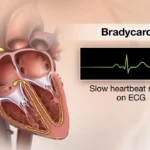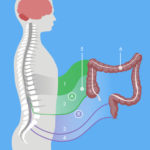Botulism is a rare but serious illness caused by toxins produced by the bacterium Clostridium botulinum. This condition can lead to paralysis and, in severe cases, death. Understanding its causes, recognizing symptoms, and taking preventive measures are crucial to mitigating risks.

What Is Botulism?
Its a neuroparalytic illness caused by the Clostridium botulinum toxin, one of the most potent poisons known to humans. This bacterium thrives in low-oxygen environments, such as improperly preserved foods, and releases toxins that block nerve functions. Botulism can occur in various forms:
- Foodborne : Linked to consuming contaminated food.
- Wound : Occurs when bacteria infect wounds and produce toxins.
- Infant : Affects infants who ingest spores that colonize their intestines.
- Iatrogenic: Results from overdoses of botulinum toxin during medical treatments.
Causes of Botulism
The primary cause of botulism is exposure to Clostridium botulinum toxins. The bacterium can enter the body through:
- Contaminated Food: Home-canned or improperly preserved foods are common culprits.
- Wounds: Contamination of open wounds, often linked to intravenous drug use.
- Environmental Exposure: Ingesting soil or dust containing spores, especially in infants.
- Medical Treatments: Rare cases from botulinum toxin injections for cosmetic or medical purposes.
Symptoms
Symptoms of botulism vary depending on the type but generally appear within 6 hours to 10 days of exposure. Key symptoms include:
Foodborne Botulism
- Difficulty swallowing or speaking
- Dry mouth
- Facial weakness
- Blurred or double vision
- Nausea, vomiting, and abdominal cramps
- Progressive paralysis
Wound Botulism
- Fever
- Skin redness and swelling at the wound site
- Muscle weakness near the affected area
Infant Botulism
- Constipation
- Poor feeding
- Weak cry
- Floppiness (hypotonia)
- Difficulty breathing
Diagnosis
Accurate diagnosis is essential for timely treatment. Physicians may employ:
- Clinical Examination: Assessing symptoms and medical history.
- Laboratory Tests: Detecting toxins in blood, stool, or food samples.
- Electromyography (EMG): Analyzing nerve and muscle function.
- Wound Cultures: Identifying bacterial presence in wound samples.
Treatment
Prompt treatment is critical to reducing complications. Common approaches include:
Antitoxins
Administered to neutralize circulating toxins, antitoxins are effective when given early in the course of the disease.
Supportive Care
- Mechanical Ventilation: For patients with respiratory failure.
- Nutrition Support: Tube feeding for those unable to swallow.
- Rehabilitation: Physical therapy to regain muscle strength.
Antibiotics
Used for wound botulism but are not effective against foodborne or infant.
Prevention
Preventing botulism requires meticulous attention to food safety and wound care. Key strategies include:
- Proper Food Preservation: Follow recommended canning guidelines and avoid consuming improperly stored foods.
- Avoiding Contaminated Food: Discard bulging, leaking, or foul-smelling canned goods.
- Wound Care: Clean wounds promptly and seek medical attention for infections.
- Infant Safety: Avoid giving honey to infants under one year old.
- Medical Precautions: Use botulinum toxin injections only under qualified supervision.
Prognosis and Long-term Outlook
With early treatment, the prognosis for botulism patients is generally good, though recovery may take weeks to months. Some individuals experience lasting weakness or fatigue, emphasizing the importance of prevention and timely medical intervention.
By understanding the risks, symptoms, and preventive measures associated with botulism, we can safeguard public health and mitigate the devastating impacts of this rare yet serious condition.

